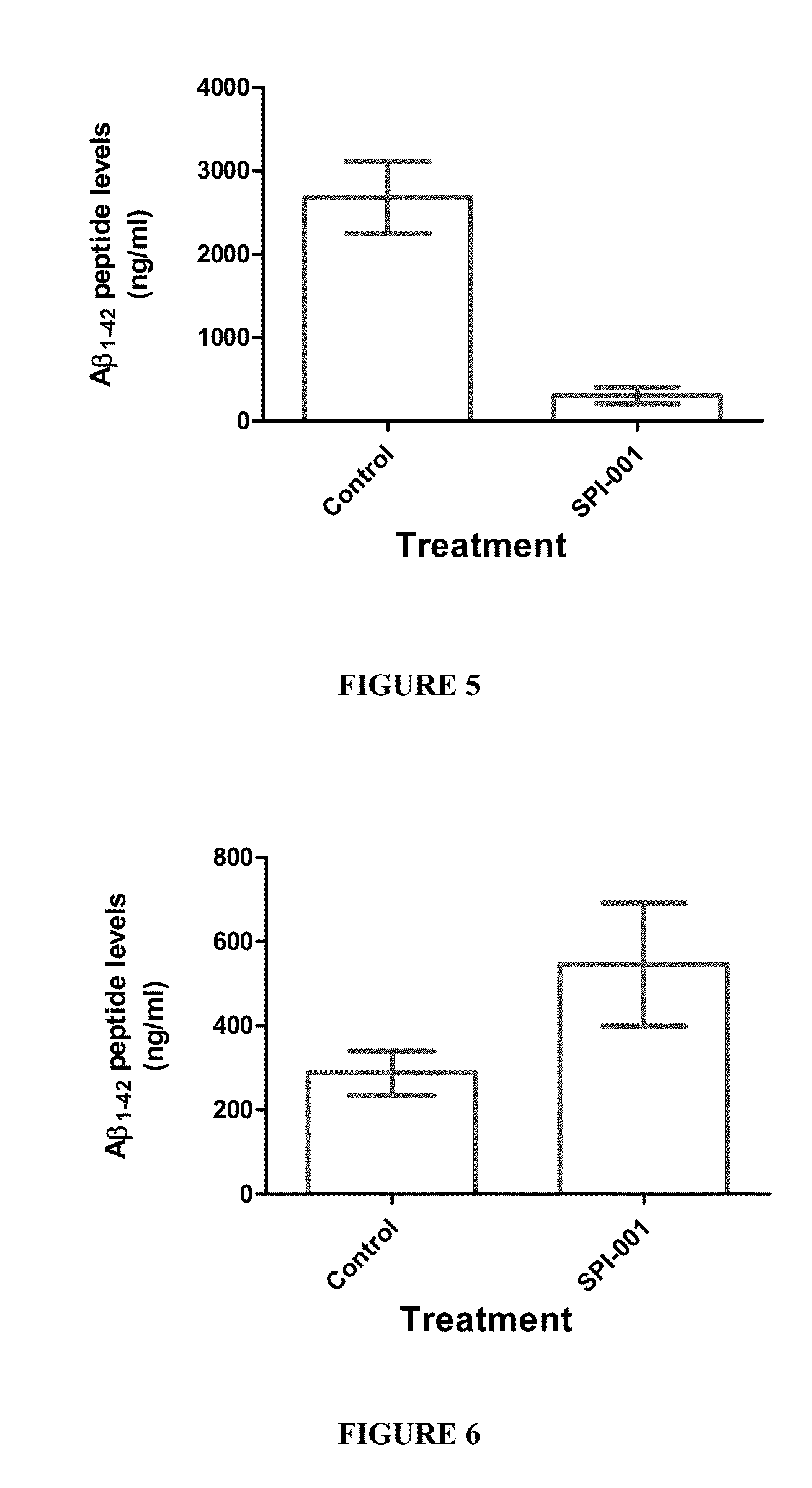Compositions And Methods Relating To Solenopsins And Their Uses In Treating Neurological Disorders And Enhancing Physical Performance
a technology of solenopsins and ad, applied in the field of solenopsins and their use in treating neurological disorders and enhancing physical performance, can solve the problems of limited ability of acetylcholinesterase inhibitors to reduce the effects of ad, and the available treatments for ad are acetylcholinesterase inhibitors
- Summary
- Abstract
- Description
- Claims
- Application Information
AI Technical Summary
Benefits of technology
Problems solved by technology
Method used
Image
Examples
example 1
1. Example 1
[0134]Fire ant venom (FAV) was extracted from S. invicta from Charleston, S.C. and transported in a Teflon beaker to prevent the ants from escaping. The ants were placed (n=100) in 30 ml vials containing hexane (5 ml). The vials were then sealed and the contents analyzed for the presence of FAV alkaloids after 24 h. The ants released their venom upon contact with the solvent.
[0135]Fire ant venom (FAV) extract was injected into aged rats (20 months) at several different doses (1, 10, and 100 ng / kg (i.p., daily). Animals were subjected to behavioral analysis using a Morris Water Maze and open-field testing after 7 days. Animals demonstrated a dose-dependent improvement in age-related deficits compared to vehicle injected animals. In addition, no adverse effects were seen in the animals at the doses given.
example 2
[0136]Mr. D. was an 86 year old, widowed, white male born in the U.S. Clinical Observations included 25 lb. weight loss, listless, restless, depressed, disorientation, and anxiety. Patient exhibited a significant decrease in cognitive functions, particularly in the areas of orientation (time, place, person), recent memory, new learning ability, digit span, information and vocabulary, calculating ability, and abstract thinking characteristic of mild to moderate Alzheimer's disease.
[0137]After serendipitous exposure to FAV (20-30 bites, 20-30 units / 1 1) within a 48-72 hour window patient exhibited marked improvement in cognitive baseline, especially in the aforementioned areas; and in following this patient during the last year (with no maintenance dosing), although patient has demonstrated some cognitive regression he still remains markedly improved in cognitive abilities. In addition, all signs of depression are gone; he has gained 27 lbs. during that one-year time fra...
example 3
Behavioral Changes in APP Mice Chronically Treated with SPI-001 (Solenopsin A) at 10 mg / kg / Day for 90 Days. Morris Water Maze Test
[0139]Based on chemical synthesis of SPI-001 and mass spec analysis, the compound has a molecular weight of <500. It is not a protein or peptide, but is a small molecule. SPI-001 is soluble in dimethyl sulfoxide (DMSO) and ethanol to 100 mg / ml. SPI-001 is slightly soluble in water. SPI-001 can be resuspended in 25% polyethylene glycol (PEG) 400 for oral delivery.
[0140]Initial studies suggest that SPI-001 inhibits MSK1 and CamK1δ while activating the MAPKAPK2 pathways and inhibiting Pl3 kinase. Recent CEREP screen indicated for SPI-001 (10 mM) that it inhibited muscarinic receptors (M1, M2 and M3), Na+ channels and monoamine (NE, DA, and 5-HT) transporters with high affinity (˜90%).
[0141]Morris water-maze testing. All mice were tested once in the Morris water maze test at the end of the experiment. Mice were trained in a 1.2 m open fiel...
PUM
 Login to View More
Login to View More Abstract
Description
Claims
Application Information
 Login to View More
Login to View More - R&D
- Intellectual Property
- Life Sciences
- Materials
- Tech Scout
- Unparalleled Data Quality
- Higher Quality Content
- 60% Fewer Hallucinations
Browse by: Latest US Patents, China's latest patents, Technical Efficacy Thesaurus, Application Domain, Technology Topic, Popular Technical Reports.
© 2025 PatSnap. All rights reserved.Legal|Privacy policy|Modern Slavery Act Transparency Statement|Sitemap|About US| Contact US: help@patsnap.com



